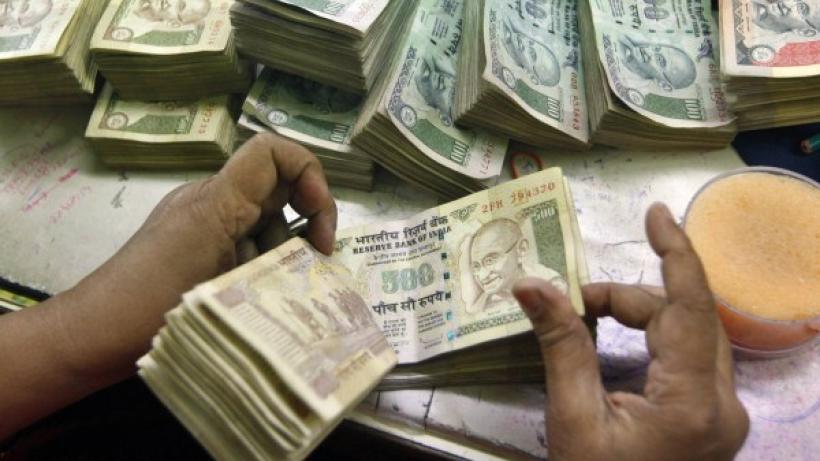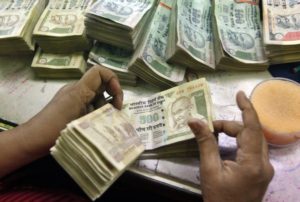
Is India ready for a universal basic income scheme?
There are hundreds of poverty alleviation programmes in India, from housing to food, from maternity benefits and child welfare to old-age support.
Name a need, add a politician's name or a government title before it and the word Yojana1 after, and you could very well be naming a real government scheme aimed at the poor.
Issues with government welfare schemes
While their performances across the country vary, it is impossible to deny that these schemes are beset with problems that limit their effectiveness.
First, there is the problem of eligibility. Often, those who should not be getting a benefit, get it (inclusion errors), while those who should be getting it, don't get it (exclusion errors).
Second, there is the problem of leakage, wastage, and corruption in the delivery process.
Third, even if the implementation process were faultless so that the first two problems were absent, administering these programmes uses up considerable manpower and resources.
Fourth, some of these schemes involve subsidies which distort resource allocation. For example, water and electricity subsidies arguably cause environmental damage and supply-side problems (falling water tables and power blackouts). Moreover, they benefit the non-poor relatively more, since they consume more of the relevant good or the service. For example, power subsidies favour those who have access to electricity and among them, those who consume more power.
Finally, leaving aside the problems on the delivery side listed above, there is also a basic problem that subsidies or in-kind transfers have – they do not leave the decision to the recipients as to what their specific needs are.

Pros and cons of alternatives
No wonder then that policymakers and academics have been debating how to reform the existing policy architecture to enhance the effectiveness of resources devoted to poverty alleviation. For example, in the recent Economic Surveys of the government, the idea of direct cash transfers has been floated, under the acronym JAM (Jan Dhan Yojana, Aadhaar cards, mobile money platforms)2. This involves rolling all subsidies supposedly aimed at the poor into a single lump-sum cash transfer to target households.
Some recent proposals have gone further than this and advocate universal basic income (UBI) which is an unconditional and uniform cash transfer from the government to every adult, rich or poor.
The history of such a proposal has impressive vintage, going back several centuries, and receives support from both ends of the political spectrum. It is viewed as a smart way of achieving redistributive goals without the various leakages and inefficiencies mentioned above. It also empowers the recipients with choice as to how they want to use this money, taking that decision away from a paternalistic State, as well as by raising the hold-out option of workers engaged in very low-income jobs (example, scavenging in the Indian context).
Such a policy is being actively debated in the West. In a referendum in Switzerland earlier this year such a policy was put to vote. It was defeated because the benefits were considered too high (around US$2,500 per month) and there were no proposals of offsetting cuts in the budget. However, the idea has gained traction and will be tried out on an experimental basis in Finland, the Netherlands, and the Canadian province of Ontario at a more modest scale, and with offsetting cuts in other welfare benefits, and scaled up nationally if the results are satisfactory.
Even the JAM proposal continues to talk about transfers only to the poor. However, this leaves open the question of how to solve the targeting problem. Use the BPL (Below Poverty Line) card? The inclusion and exclusion errors are large - a recent study in Karnataka shows that more than two-thirds of ineligible individuals held a BPL card, while around one-sixth of eligible individuals did not have it (Mullainathan et al. 2013).
The main attraction of the UBI is that it bypasses the selection problem altogether by making the transfer universal.
What is the catch?
Funding a universal basic income programme
First, any universal programme is expensive.
For example, if we were to give every adult exactly the amount of income that defines the poverty line, which would ensure that everyone would be brought above the poverty line, calculations suggest the bill would amount to 11% of the GDP (Gross Domestic Product). This is just a hypothetical example. One can, of course, offer a lower amount per person that would be more affordable.
However, in this context, a sense of perspective is needed in discussing expenditures on programmes aimed at the poor, who by official estimates, constitute 30% of the population. Calculations suggest that if we take just twice the amounts that define the poverty line, almost 80% of the population lives below that.
Yet non-universal programmes targeted to the non-poor are being doled out without much controversy on a regular basis. The total bill from implementing the recommendation of the 7th Pay Commission that will benefit 4,700,000 employees and 5,200,000 pensioners (only 0.8% of the population) is 1% of the GDP. Calculations based on tax data suggest that the top 1% account for 13% of GDP, yet income tax which is only paid by 1% is a mere 1.87% of GDP. Bad loans in public sector banks (90% of which is attributed to large borrowers) constitute 5% of GDP by conservative estimates. Bad loans being a stock, a more relevant figure would be annual interest income if this amount was annuitised. At the current interest rate of 6.5% per annum, the annual interest income would be 0.3% of GDP. Compare this with the expenditure on the much-maligned MNREGA (Mahatma Gandhi National Rural Employment Guarantee Act) - a mere 0.4% of GDP.
Second, for such a programme not to add to the fiscal burden and create inflationary pressure, it has to be funded either by spending cuts or by increased taxes.
The scope for spending cuts certainly exists. Explicit subsidies cost the government 4.2% of GDP. Revenues foregone by the government on various exemptions and concessions given to tax payers constitute another 6.7% of the GDP. That adds up to almost 11%. A different exercise calculates the percentage of all central and state subsidies taken together that go to the non-poor, and finds this to be 9% of the GDP. There is no question that potential resources exist that could fund a UBI scheme, but the real issue is whether there will be political support for the subsidy cuts, about which one cannot be very optimistic.
How about raising taxes? Given that only 1% of the population pays income tax, while 2.3% file tax returns, the fiscal instruments to claw back the transfer from the rich are limited. Once again, even adjusting for India's low per capita income, the startlingly low fraction of income-tax payers reflects the fact that the agricultural and informal sectors' incomes do not fall under its net.
None of these are insurmountable problems. Cutting wasteful expenditure and raising the tax base are both essential steps in fiscal reforms to raise resources for development, whatever may be one's priorities, whether it is investing in infrastructure or fostering human capital or alleviating extreme poverty. It just underlines the importance of serious fiscal reforms, without which all these discussions are like deciding on what kind of cuisine to have without any money in the pocket.
Similarly, it is true that the experience with implementing cash transfers in several states has been sobering, causing disruptions and hardships to the poor. While this is a valid concern, any change leads to some disruptions in the short run, and these logistical problems are not impossible to overcome. One might also worry that the poor may not make the best use of the money in a cash transfer scheme but existing evidence does not provide support to this view.
Avoiding standard pitfalls
In discussing the merits and demerits of the UBI or any other development policy, it is important to avoid some standard pitfalls.
First, all policies have some pros and cons, and so just picking a problem with or highlighting a nice feature of a particular policy is not good enough. That traps us in an elusive search for ‘win-win’ policies. The focus should be on relative costs and benefits of different policies. For example, if we compare a UBI scheme with MNREGA, the trade-offs are as follows. The advantage of MNREGA is it has self-targeting - you receive welfare only if you work. Hence it has a lower total cost than a UBI scheme for comparable amounts of per-person benefits. However, MNREGA has the disadvantage that some employment opportunities are foregone, a problem the UBI avoids.
Second, one size does not fit all. We should be open to the possibility that different policies could work well in different contexts. Cash transfers only make sense if you have ready access to markets, which is not true if you live in remote rural areas in which we have to rely on in-kind transfers. In a study of the bicycle scheme for school children in Bihar, we found that those living in remote areas do in fact prefer in-kind to cash transfers, with the opposite holding for those who live in urban areas.
Third, there is no magic pill that will cure all problems. Different policies are needed to address different problems. So yes, a UBI or a cash transfer as envisaged by JAM or the MNREGA will provide some relief to the poor, but will not provide a long-term solution to the problem of poverty. For that one needs investment in health, education, and skill formation to enable the poor to take advantage of growth opportunities, and investing in infrastructure and regulatory conditions to facilitate private investment for employment generation. To give an analogy, giving certain nutritional supplements may help a person who is ill to gain some strength, but it will not cure any disease, nor will it make the person an athlete.
My sense is that a lot of opposition to schemes like the UBI reflects the worry that they will displace other anti-poverty policies. To the extent that is not the case, why not try it out, at least on a scale that is affordable?
The author would like to thank Pranab Bardhan, Parikshit Ghosh, and Vijay Joshi for helpful feedback.
This article originally appeared on 26 August 2016 on NDTV and it has been also published on Ideas for India.
Notes:
- Yojana is Hindi for plan.
- Pradhan Mantri Jan dhan Yojana (PMJDY) is the Indian government’s flagship financial inclusion scheme. It envisages universal access to banking facilities with at least one basic banking account for every household; financial literacy, access to credit insurance and pension facility.
- Aadhaar or Unique Identification number (UID) is a 12-digit individual identification number issued by the Unique Identification Authority of India (UIDAI) on behalf of the Government of India. It captures the biometric identity – ten finger prints, iris and photograph – of every resident, and serves as a proof of identity and address anywhere in India.
Further Reading
- Ghatak, M (2016), ‘The price of basic income’, Indian Express, 1 July, 2016.
- Jhabvala, R (2016), ‘India’s time for unconditional cash transfers’, Financial Express, 17 May 2016.
- Mullainathan, Sendhil, Paul Niehaus, Antonia Atanassova and Marianne Bertrand (2013), “Targeting with Agents”, American Economic Journal: Economic Policy, 5 (1):206-38. Available here.
- Rangarajan, C, S Mahendra Dev, K Sundaram, M Vyas and K L Datta (2014), ‘Report of the Expert Group to Review the Methodology for Measurement of Poverty’, Planning Commission, Government of India.

